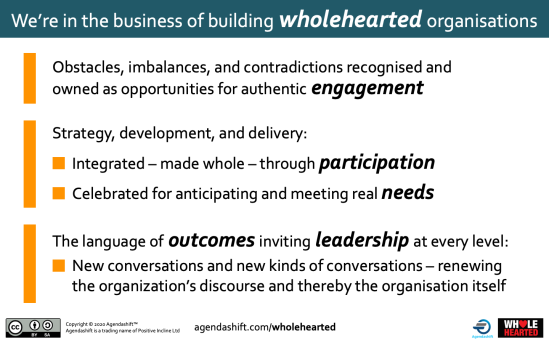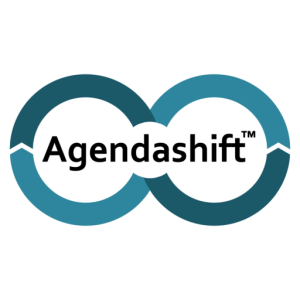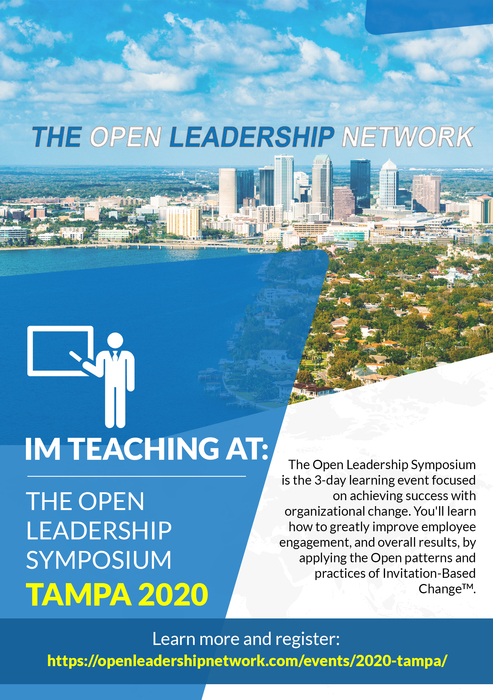[Shared: LinkedIn & Twitter]
The short version: New year, new branding. It has substance. And a special offer!

I’ve mentioned wholehearted here a few times. The response to it has been amazing – I’ve even had people citing it as clinching their decision to become Agendashift partners. And today we’re making it official, rebranding Agendashift as the wholehearted engagement model.
Time then to sharpen up the website! I have taken the opportunity to give it a substantial overhaul, most visibly here:
In fact, little has gone untouched. If you have a moment, check these out too:
The substance
Our mission: Helping organisations grow in wholeheartedness – to become less at war with themselves, their obstacles, imbalances, and contradictions identified and owned, value and meaning created through authentic engagement.
Expanding just a little:

Source: Our mission: Wholehearted (agendashift.com/wholehearted), CC-BY-SA licence.
The wholehearted page expands further, describing where we’re coming from, what sets us apart, the challenge that motivates us, and so on. Here, let say a bit more about how wholehearted works, what it isn’t, and three of its less obvious inspirations.
Wholehearted (or wholeheartedness) works because it is three things at once:
- It’s a metaphor that resonates quickly and is capable of inspiring at a human level
- It describes something worth striving for regardless of whether it can ever be attained in full
- It’s something that can be experienced immediately, and in practical terms
That hint of paradox doesn’t hurt either! And if you’re wondering about the experience part, read on right to the end, where I’ll repeat an offer made last month.
What it’s not:
- Another Agile reboot – I have more respect for Agile than that
- Another Agile process framework – there are plenty of those already, and beyond the travesty of imposition (Agile’s shame) there are other serious issues with that approach that I’ll come to
- A manifesto (whether Agile’s “this over that” style or otherwise) – there are more than enough of those too; wholehearted is our mission statement, and the internal work of clarifying that to ourselves, partners, and clients was more important than the wider response (though naturally I’m grateful for the validation)
As acknowledged here previously [1] and as documented on the Wholehearted page, the initial inspiration for the wholehearted metaphor is due to the acclaimed architect and father of the patterns movement Christopher Alexander; in Right to Left [2] I reproduce with permission a quote from his classic book The Timeless Way of Building [3]. Applying Alexander’s metaphor in an organisational context, I channel three further inspirations that might not be obvious and aren’t called out explicitly: viable system model, servant leadership, and social constructionism.
Viable system model
The more mainstream Agile becomes, the more credit seems to be given to delivery process at the expense of critical things like strategy and organisation development. Time and time again, what gets copied (out of its original context) is the surface detail; what gets missed is less easily reproduced but vastly more critical to lasting success.
That’s a familiar enough complaint. Suffering from very similar problems, the Lean community woke up some years ago to what might have become a fatal flaw and went about redefining and reinventing itself. The Agile community seems to recognise the problem, but it takes a long time to turn the supertanker around and its momentum is still very much the other way. If I’m honest, I’m not convinced that the turnaround has even started.
Lest I be accused of merely whining, we offer something very practical:
Strategy, development, and delivery integrated – made whole – through participation
Those few words describe much of my work of the last few years; I phrased it that way thanks to the consultant’s secret weapon, Viable System Model (VSM) [4]. VSM is the model developed by Stafford Beer, an early pioneer of management cybernetics, and it identifies the elements required for an organisation to be viable and how they relate to each other.
In wholehearted I’ve picked out only three of those elements (you’ll find more in Right to Left), but it’s a decent start! Students of VSM will recognise also that participation is a possible approach to solving the problem of requisite variety, which roughly translates into the organisation being able to recognise and cope with the range of 1) what’s thrown at it and 2) what happens within it, the two being related.
Servant Leadership
Organisations won’t last long if they’re not meeting needs. Today that sounds like a truism, but writing in the 1970’s, long before a decades-long shift in employment patterns played out, Greenleaf [5] grasped and articulated some profound implications for leadership. I’m a firm believer both in good leadership and in starting with needs [6], so what better model than this one!
A small caveat: I have come to understand not only that leadership development and organisation development are inextricably linked, but that the latter is often the more promising entry point. Jumping straight to my bottom line, I have zero appetite for cultural change initiatives when they’re divorced from the organisation’s practical and strategic realities. In Agendashift-speak (with credit to Daniel Mezick and Mark Sheffield for the wonderfully punny inviting leadership [7]):
The language of outcomes inviting leadership at every level
I could also cite mission command, Marquet’s leader-leader model, etc here too – see the last chapter of Right to Left for how I tie these together.
Social constructionism
Social constructionism [8], is the philosophical concept that underpins dialogic organisation development, on which Agendashift leans heavily (though not exclusively) [9]. It’s the recognition that people and their social interactions give reality and meaning to organisations (to its credit, there’s more than a hint of that in the Agile manifesto). Without them, the organisation is nothing and meaningless, and it’s another reason why a process-centric view of organisations is so hopelessly inadequate.
Much less sterile (and related to the language of outcomes):
New conversations and new kinds of conversations – renewing the organisation’s discourse and thereby the organisation itself
You know something has changed when the language has changed; the converse can be true not just at the level of terminology or sentiment, but fundamentally.
Watch out for a follow-up post very soon (it’s already drafted) on the language of outcomes and its lessons for leadership.
References
[1] Towards the wholehearted organisation, outside in (May 2018)
[2] Right to Left: The digital leader’s guide to Lean and Agile, Mike Burrows (New Generation Publishing, 2019)
[3] The Timeless Way of Building, Christopher Alexander, (OUP USA, 1980)
[4] Viable system model (en.wikipedia.org), and I would strongly recommend one of Right to Left‘s references, The Fractal Organization: Creating Sustainable Organizations with the Viable System Model, Patrick Hoverstadt, (John Wiley & Sons, 2008)
[5] Servant Leadership: A Journey into the Nature of Legitimate Power and Greatness, Robert K. Greenleaf, (Paulist Press, 25th Anniversary edition, 2002)
[6] Agendashift model overview – “Start with needs” is principle #1
[7] Inviting Leadership: Invitation-Based Change™ in the New World of Work, Daniel Mezick and Mark Sheffield (Freestanding Press, 2018)
[7] Social constructionism (en.wikipedia.com)
[8] What kind of Organisational Development (OD)? (And a book recommendation) (May 2019), the book in question being Dialogic Organization Development: The Theory and Practice of Transformational Change, Gervase R. Bushe & Robert J. Marshak (2015, Berrett-Koehler Publishers)
Acknowledgements
My thanks to Agendashift partners Steven Mackenzie, Dragan Jojic, Karl Scotland, Teddy Zetterlund, and Kjell Tore Guttormsen for their part in the many iterations that wholehearted went through. To Daniel Mezick, Jutta Eckstein, Heidi Araya and partner Angie Main for their feedback and encouragement. Finally to Mark Sheffield for his careful review not just of this post but to the linked resources.
Special offer
20% off for any private (company-internal) Wholehearted:OKR workshop held in January, and 10% off for any booked by the end of that month for delivery at some agreed later date. Perfect for kicking off not just the new year but a new decade!
Or attend a public workshop:
Workshops upcoming in 2020 – Tampa, London (*2), Gurugram, Malmö, Oslo (*2), Tel Aviv
See also our workshops and events pages. Tel Aviv (early June) to be added soon. All workshops (not just Wholehearted:OKR) have been updated to reference wholehearted.
- 4th February, Tampa, FL, USA:
Impact! Strategically outcome-oriented for products and services
- 14th February, London, UK
Impact! Strategically outcome-oriented for products and services
- 2-3 March, Gurugram, India
2-day Advanced Agendashift: Coaching & leading continuous transformation
- 11-12 March, Malmö, Sweden – Julia Wester & myself:
Advanced Agendashift: Coaching and Leading Continuous Transformation
- 30-31 March, Oslo, Norway – Kjell Tore Guttormsen, Halldor Kvale-Skattebo, & myself:
Wholehearted: Bringing OKR to life with Agendashift
- 22-23 April, London, UK – Karl Scotland, Steven Mackenzie, & myself:
Wholehearted: Bringing OKR to life with Agendashift
- 8-9 June, Oslo, Norway:
2-day Advanced Agendashift: Coaching & leading continuous transformation
From the exciting intersection of Lean-Agile, Strategy, and Organisation Development, Agendashift: The wholehearted engagement model
Links: Home | About | Our mission: Wholehearted | Become an Agendashift partner | Assessments | Books | Resources | Events | Contact | Mike | Subscribe
Blog: Monthly roundups | Classic posts
Community: Slack | LinkedIn group | Twitter













